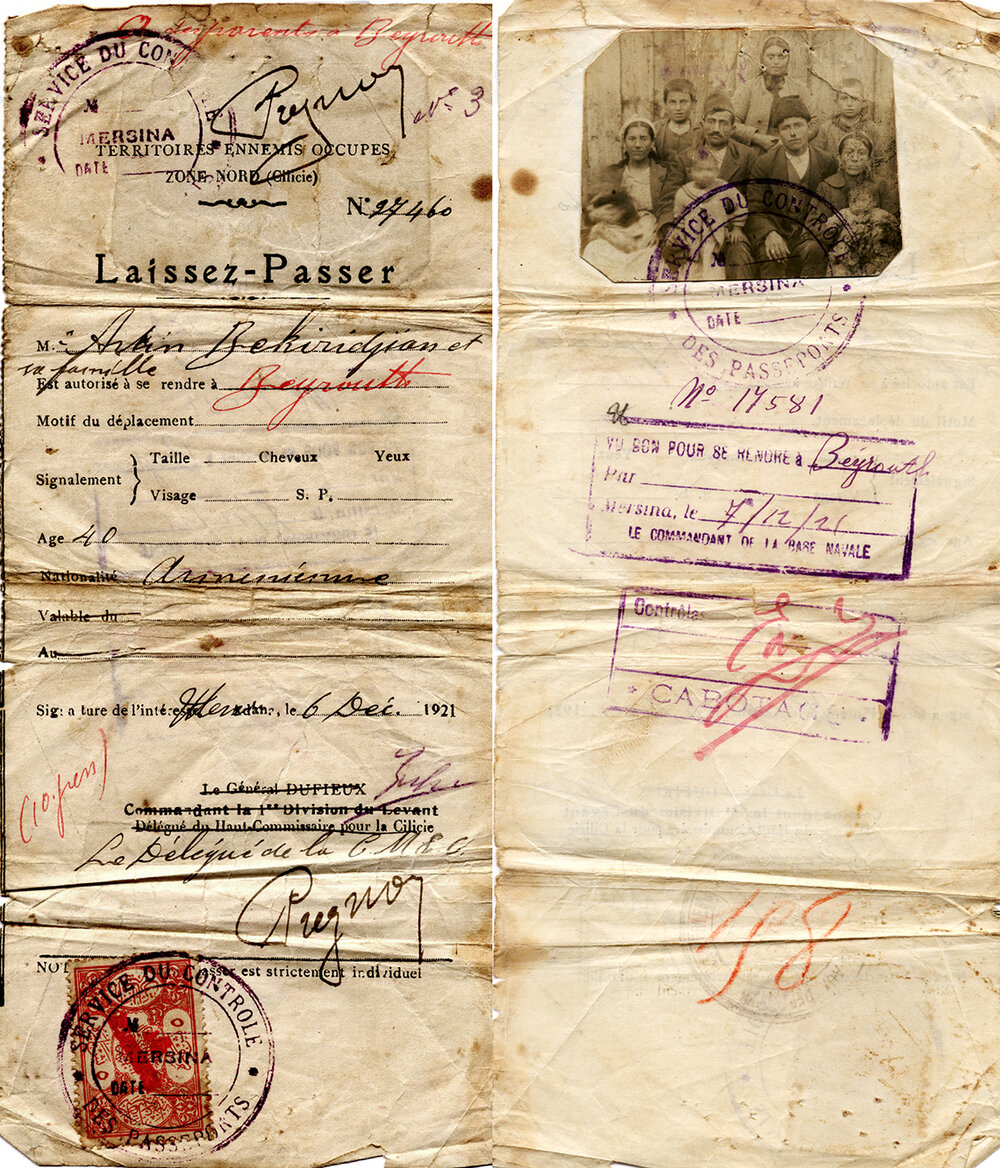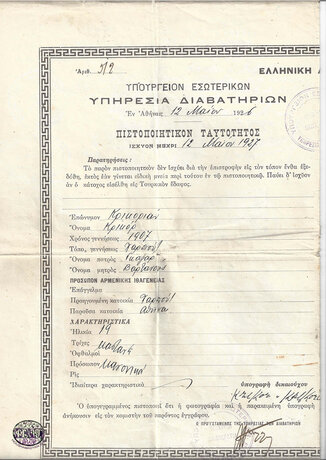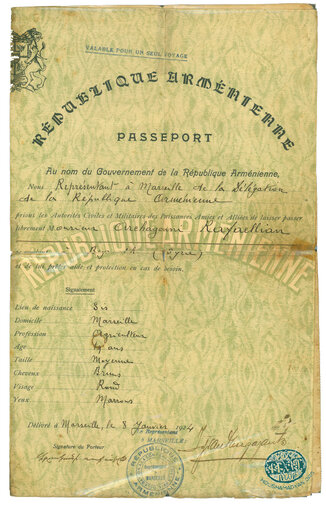Identity(ies): The Questions of Belonging

While objects, photographs and family stories behind these are informal records that help us to chronicle the pre and post-Genocide Ottoman Armenian past, the documents that we present in this section do this in a slightly more formal way. Identity papers, passports, deeds, diplomas, birth, baptism and marriage certificates and other variety of identification documents not only lay out the formal links and attachments that Armenians had with the Ottoman Empire and its institutions, but also the many lives that they lived beyond the Ottoman Empire—as subjects, citizens, or, simply, as stateless refugees. These documents that were created as a result of Armenians coming into “contact” with states, authorities and institutions—either by brute force, or by default, or by choice, or by chance—shed light on Armenian history at several different levels.
First, these documents are witnesses to micro-histories told and made at the most formal level. It’s people’s history, told by the people, but through documents issued by formal authorities—states, international institutions, churches, schools and the like. These documents that establish the micro-history are intersection points of the non-official with the official.
Second, these documents help us to understand the degree of the displacement that the Armenians experienced, as these documents detail the trajectory that Armenians and their documents travelled before and after the Genocide, at the most individual level.
Immediately before the Genocide, there were two main reasons for Ottoman Armenians leaving the Ottoman Empire in search for other destinations. First, as traders, a small group of them were drawn to the hubs of commercial activity of the growing global commercial networks settling in these cities. The main reason that motivated the Armenian departure from the Ottoman Empire in the late 19th century, however, was the political and economic instability in Ottoman Eastern provinces. Most particularly, starting in 1895, as a result of series of mass violence committed against Armenians of the Ottoman Empire, waves of Armenian immigrants started to arrive in the New World.

The Genocide, however, took this Armenian displacement to another level. Those who managed to survive the Genocide and stayed in Anatolia transitioned from being Ottoman subjects into the citizens of Republic of Turkey. Those who survived and forcibly ended beyond the borders of what once was the Ottoman Empire, or in the new states (Syria, Lebanon, etc) founded within the borders of the former Empire, however, ended up being citizens and subjects of these and other states or stateless refugees. But sometimes even these arrangements-- documented as passports or identity papers--proved to be temporary. As Armenians were forced to move over borders, borders also moved over them. As borders changed, so did the authorities that issued these identity documents and the laws that Armenians and their documents were bound with.
Consequently, related to ever changing borders, states, authorities and laws, the documents that we present in this section, continue to remind us the ever-persistent question of “Armenian”-“ness” as well as the issues of identity and belonging. This is because these documents not only attest to who these Armenians were, could be, or could have been, but also where they came from, where, as Armenians and former subjects of the Ottoman Empire, were allowed to stay and allowed to go or not to go. These documents tell us who one can be and become and where one can or cannot belong. Put differently, these documents, as much as they are about Armenian history, told through micro-histories of the people, entangled in the intricacies of the global history, they are about the identity(ies) that Armenians carried that rarely overlapped. By way of that, these documents are about very Armenian stories of (be)-longing and dis/mis/un-belonging— that were passed on from one generation to another—just like the documents in this section.
After the Genocide, Krikor Krikorian, native of the village of Morenig (present day Çatalçeşme), migrated to Greece. This document in Greek and French, served as Krikor’s identity card, and was issued and stamped by the Greek Ministry of Interior Affairs. It dates from May 12, 1926 (Source: Alexis Krikorian collection, Lyon and Geneva).
A civil registration certificate, issued in Buenos Aires and dated 1921, belonging to the Tahtadjian family. Hagop Tahtadjian was born in Aintab. He settled down in Buenos Aires in 1910. There, he married Rosa Kalfayan. This document includes the names and dates of birth of their three children: Ardashes/Alfredo (born in 1922); Ovsanna/Azadouhi (born in 1925), and Melkon (born in 1929) (source: Tahtadjian Family Collection, Buenos Aires).
Arshagouni Raphaelian’s passport, issued by the Republic of Armenia. This document was issued to Armenian refugees who lived in Europe, but who were unable to obtain citizenship from the countries in which they lived. Arshagouni hailed from Sis/Kozan. He left his native town, alongside his family, in 1921 or 1922, and like thousands of other Armenian refugees, he found sanctuary in Lebanon.He left Beirut and reached Marseille in 1923. This passport was issued soon after his arrival, on January 8, 1924.The notations on the back of the passport indicate that Arshagouni Raphaelian used it to return to Lebanon on September 18, 1924 (Source: Raphaelian collection, Beirut, Lebanon).












